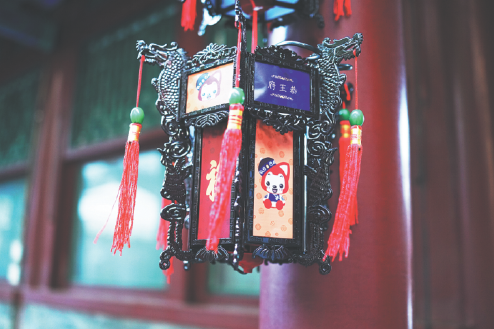 |
|
A show featuring a cartoon image of a red fox dressed in the traditional costume of a prince was staged in Prince Kung's Mansion in Beijing in July. [Photo provided to China Daily]
|
However, the museum's ambitions extend far beyond hawking good-luck symbols to the masses, and this year it set up a department whose task is to look at how it can draw on its huge collections to develop more products, especially those young people, and thus set the museums cash registers ringing.
In so doing, Prince Kung's Palace Museum is a kindred spirit with thousands of other museums throughout the country that over the past few years have begun to cast aside the image of stuffy institutions out of touch with the public to be replaced by switched on business operations that know how to turn a dollar.
In July, Suzhou Museum in Jiangsu province and fashionable clothes brands on T-mall, China's largest e-commerce platform, put their heads together to use elements from the museum's ink paintings and calligraphy in designs for T-shirts and dresses. Not only that, but for a brief time the museum became the venue for a fashion show, perhaps a first in China.
Elements of works by the Ming Dynasty (1368-1644) scholar and calligrapher Tang Bohu and even of the museum's architecture designed by I.M. Pei have even found their way onto chic articles of clothing, and in just one three-day period the platform attracted about 60,000 buyers.
Jiang Han, who is responsible for product development for Suzhou Museum, says its fashion initiative has set the standard for other museums across the country that need to get in touch with people and reshape the attitudes of young people regarding museums.

